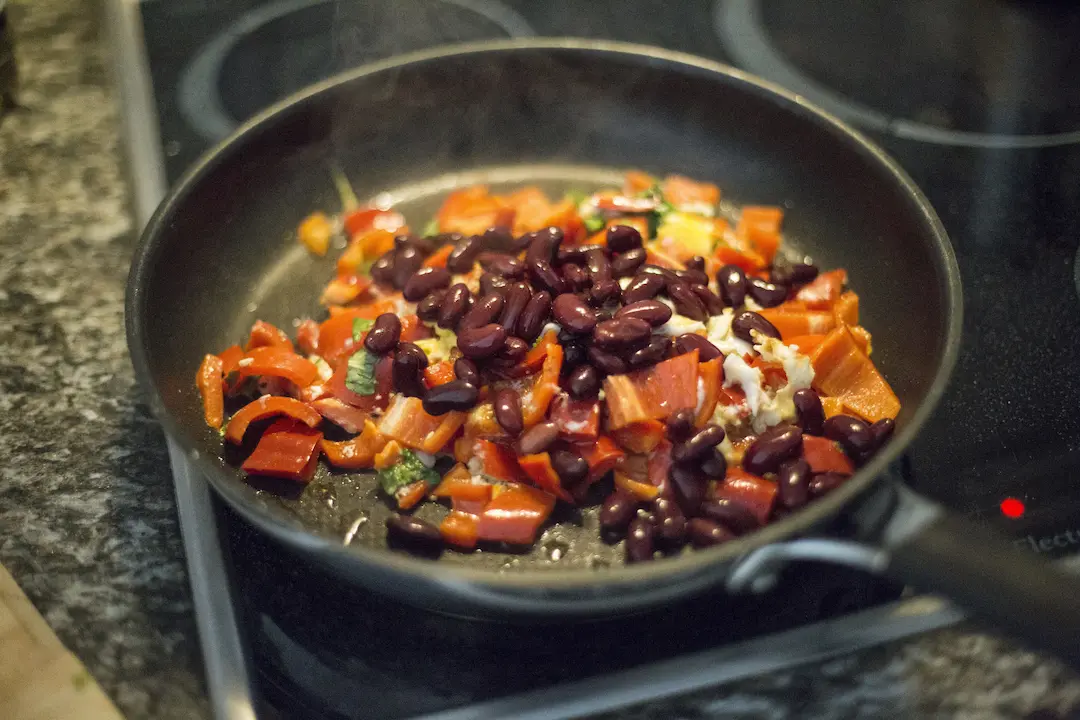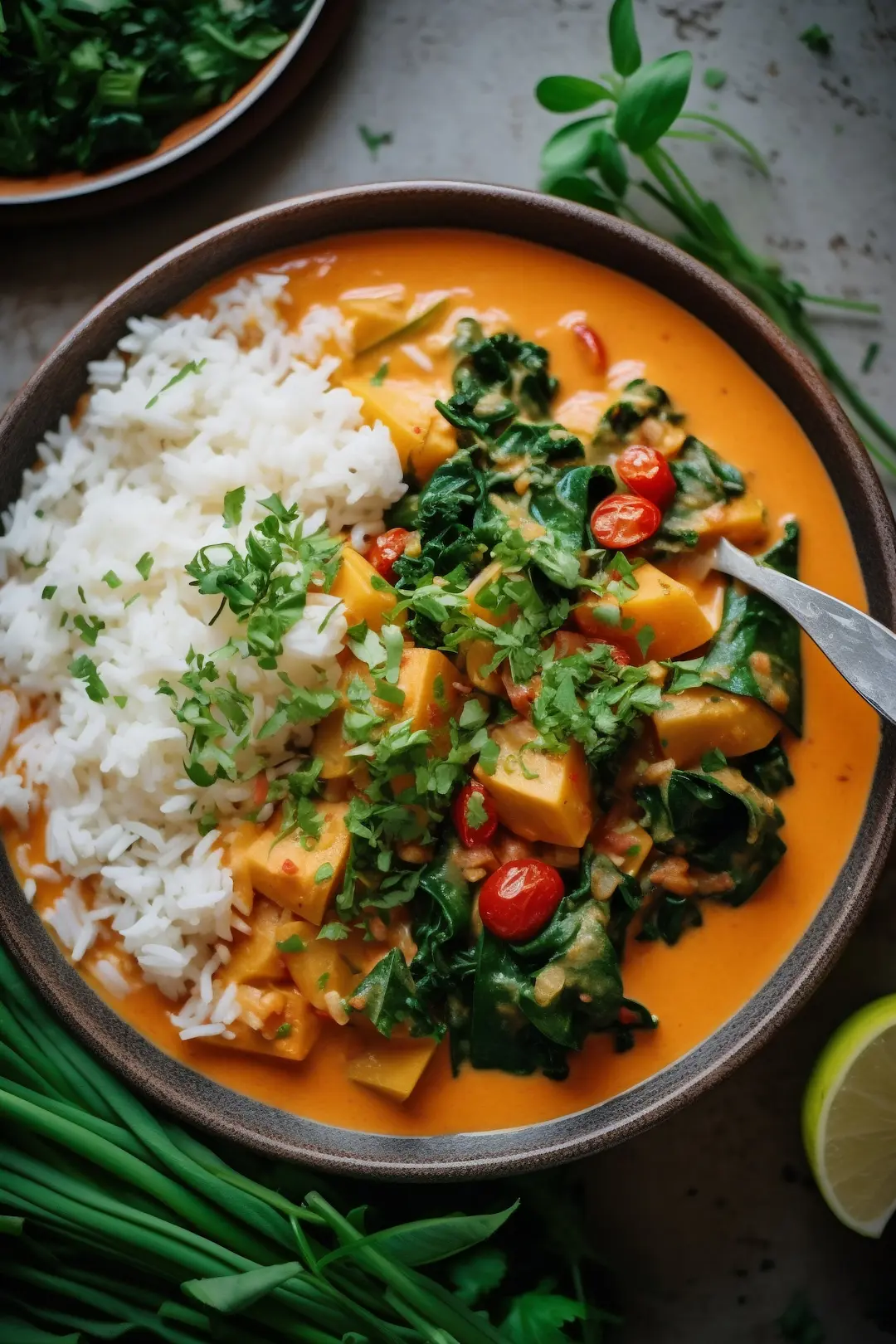Embarking on a culinary journey through the warm, inviting world of calabaza dishes promises not just a feast for the taste buds but also a deep dive into a tradition steeped in history and flavor. This versatile squash, with its rich nutritional profile and adaptability in various recipes, sits at the heart of our exploration. From simple roasts to elaborate stews, calabaza lends itself to an array of culinary creations that bridge cultures and cuisines. Our comprehensive guide aims not just to introduce you to the delightful versatility of calabaza but also to inspire you to weave it into your daily cooking repertoire. So, let’s embark on this flavorful voyage, shall we?
Historical Background
Diving into the world of calabaza, it’s essential to peel back layers of history to appreciate its roots. Originating from the Americas, this squash has been a staple in indigenous diets long before European explorers set foot on the New World. With its hearty flesh and rich nutritional content, calabaza has carved out a niche for itself across various cultures, evolving into a global culinary icon.
Nutritional Value
When it comes to health, calabaza is nothing short of a powerhouse. Packed with vitamins A and C, it’s a beacon of wellness, illuminating the path to a balanced diet. What’s more, its high fiber content and low calories make it an ideal choice for anyone looking to maintain a healthy lifestyle. For a deep dive into its nutritional wonders, USDA’s comprehensive analysis sheds light on why calabaza deserves a spot on your plate.
Embarking on this culinary expedition, we aim not just to savor the rich flavors of calabaza but also to celebrate its vibrant history and nutritional prowess. As we journey through recipes and preparation tips, we invite you to embrace the warmth and versatility of this beloved squash. Stay tuned for our next installment, where we’ll delve into selecting and preparing your calabaza for a culinary adventure that promises to be as enriching as it is delicious.
Selecting and Preparing Calabaza
Selecting the Best Calabaza
Choosing the right Calabaza is akin to picking a fine gem; look for vibrant color and firm texture. It’s available mostly in the fall and winter months, making it a perfect ingredient for seasonal dishes. Here are the signs to look for:
- Bright, uniform color without any soft spots
- Heavy for its size, indicating juiciness
Preparing Calabaza for Cooking
Once you’ve brought home the perfect Calabaza, preparing it for cooking is a breeze. Here’s how to get started:
- Wash the exterior thoroughly to remove any dirt.
- Cutting: Slice off the top and bottom to create stable surfaces. Halve it, scoop out the seeds, and then chop as needed for your recipe.
- To Peel or Not to Peel?: For most recipes, peeling is optional. The skin softens with cooking and is packed with nutrients.
Incorporating these tips ensures that your Calabaza dishes will not only taste great but will also be packed with nutritional benefits, aligning with our goals for healthy, seasonal cooking. Stay tuned as we delve into simple and advanced recipes that highlight the sweetness and versatility of this wonderful squash. Whether roasted or turned into a comforting soup, Calabaza promises to bring warmth and flavor to your table.
In the next section, we’ll share some basic yet transformative Calabaza recipes that are sure to impress. So, sharpen your knives and get ready to explore the culinary potential of this exceptional vegetable!
Remember, the journey through the world of Calabaza is not just about following recipes; it’s about experimenting, tasting, and enjoying the process. Let’s keep the adventure going!
Advanced Calabaza Dishes
Calabaza Con Pollo
This dish is a hearty and comforting meal, perfect for a cozy night in. The succulent flavors of chicken blend seamlessly with the sweetness of calabaza, creating a dish that’s both nutritious and satisfying. Let’s dive into the ingredients and the step-by-step cooking method.
- Ingredients:
- 1 lb calabaza, cubed
- 2 lbs chicken thighs, bone-in
- 1 large onion, chopped
- 3 garlic cloves, minced
- 1 bell pepper, chopped
- 2 tomatoes, diced
- 1 tsp cumin
- 1 tsp paprika
- 2 tbsp olive oil
- Salt and pepper to taste
- Fresh cilantro, for garnish
- Cooking Steps:
- In a large pot, heat olive oil over medium heat. Add the chicken thighs, seasoning them with salt and pepper, and brown on both sides. Remove and set aside.
- In the same pot, add the onion, garlic, and bell pepper, cooking until soft.
- Return the chicken to the pot, along with the cubed calabaza, diced tomatoes, cumin, and paprika. Stir well to combine.
- Cover and simmer on low heat for about 45 minutes, or until the chicken is cooked through and the calabaza is tender.
- Garnish with fresh cilantro before serving. Enjoy with a side of rice or warm tortillas.
Calabacitas with Zucchini and Squash
A delightful vegetarian option, this dish celebrates the bounty of the garden with a mix of calabaza, zucchini, and squash. It’s a colorful and nutritious side that pairs well with any main.
- Ingredients:
- 1 lb calabaza, cubed
- 2 medium zucchinis, sliced
- 2 yellow squash, sliced
- 1 onion, chopped
- 2 cloves garlic, minced
- 1 cup corn kernels
- 1 tomato, diced
- 2 tbsp olive oil
- Salt and pepper to taste
- Queso fresco, for serving
- Fresh cilantro, for garnish
- Cooking Process:
- Heat olive oil in a large skillet over medium heat. Sauté onion and garlic until translucent.
- Add calabaza, zucchini, and yellow squash, cooking until they begin to soften.
- Stir in corn kernels and diced tomato. Season with salt and pepper.
- Continue cooking for an additional 10 minutes, or until all vegetables are tender.
- Serve warm, topped with crumbled queso fresco and garnished with fresh cilantro.
These advanced calabaza dishes are sure to impress, offering deep flavors and healthful benefits. So, why not elevate your culinary repertoire by introducing these vibrant and nourishing recipes to your dining table? Stay tuned for more delicious calabaza inspirations in our next section.
Advanced Calabaza Dishes (Continued)
Embarking on a culinary adventure with calabaza means exploring its potential beyond the basics. These advanced recipes not only highlight the squash’s adaptability but also its capability to be the star of the show in more complex dishes. Let’s delve deeper into the realm of flavors and textures that these advanced calabaza dishes offer.
Calabaza Con Pollo: A Fusion of Flavors
Calabaza Con Pollo stands as a testament to the harmony between vegetables and meat, creating a stew that’s both comforting and rich in flavors. This dish, reminiscent of a warm embrace, combines the sweetness of calabaza with the savory goodness of chicken, enriched by a blend of spices that elevate it from the ordinary.
Ingredients Revisited
- Calabaza, cubed, and chicken thighs, marry in the pot with a mélange of spices including cumin and paprika, creating a dance of flavors.
- Onion, garlic, and bell pepper add layers of flavor, while
International Calabaza Dishes
As we venture further into our culinary journey with calabaza, we discover its global appeal. This versatile squash is not only a staple in various cuisines but also adapts beautifully to different cooking traditions around the world. In Part 5, we’ll explore two international dishes that celebrate calabaza, each bringing a unique taste and tradition to the table.
Caribbean Calabaza Stew
The Caribbean Calabaza Stew is a vibrant, soul-warming dish that reflects the eclectic mix of cultures found in the Caribbean. With its rich spices and hearty ingredients, it’s a testament to the region’s ability to turn simple produce into something truly extraordinary.
Unique Ingredients
- 1 lb calabaza, peeled and cubed
- 2 cans coconut milk
- 1 lb chicken, cut into pieces
- 1 large onion, chopped
- 2 cloves garlic, minced
- 1 Scotch bonnet pepper, deseeded and chopped
- 1 tsp ground allspice
- 1 tsp thyme
- Salt and pepper to taste
- 2 green onions, chopped
- 1 large carrot, sliced
- 1 cup chicken broth
Cooking Technique
- In a large pot, sauté the onion, garlic, and Scotch bonnet pepper in a bit of oil until soft.
- Add the chicken pieces, browning them slightly.
- Stir in the calabaza, carrot, allspice, thyme, salt, and pepper.
- Pour in the coconut milk and chicken broth, bringing everything to a simmer.
- Let the stew cook until the chicken is tender and the calabaza falls apart easily, about 30 minutes.
- Finish with a sprinkle of green onions before serving.
This stew, with its combination of sweet calabaza and fiery Scotch bonnet pepper, enveloped in creamy coconut milk, is a celebration of flavors that are bold yet harmonious.
Asian-Inspired Calabaza Curry
Asian cuisines are known for their intricate balance of flavors, and this recipe Curry is no exception. It’s a dish that showcases how calabaza can be seamlessly incorporated into the rich tapestry of Asian cooking, absorbing and complementing the bold spices and herbs.
Curry Variations
- 1 lb calabaza, peeled and cubed
- 1 can coconut milk
- 1 tbsp curry powder
- 1 tsp turmeric
- 1 tsp cumin
- 1 large onion, diced
- 2 cloves garlic, minced
- 1 inch ginger, minced
- 1 red bell pepper, sliced
- 1 cup vegetable broth
- Fresh cilantro, for garnish
Cooking Instructions
- Start by sautéing the onion, garlic, and ginger in a large pan until they become fragrant.
- Sprinkle in the curry powder, turmeric, and cumin, cooking them briefly to release their flavors.
- Add the calabaza and red bell pepper, stirring to coat them in the spices.
- Pour in the coconut milk and vegetable broth, and let the curry simmer gently.
- Cook until the recipe is tender and the sauce has thickened, about 20 minutes.
- Garnish with fresh cilantro just before serving.
This curry, with its aromatic spices and creamy sauce, highlights the calabaza’s ability to absorb and enhance the flavors around it, making it a perfect dish for those looking to explore the intersection of tradition and innovation in cooking.
Through these international dishes, recipe proves itself to be a culinary chameleon, adapting to a variety of cooking styles and flavor profiles, from the spicy and aromatic to the rich and comforting. These recipes not only celebrate the versatility of recipe but also the rich tapestry of global cuisine, inviting us to explore new tastes and traditions through this humble yet remarkable squash.
Tips and Tricks for Cooking
Navigating the culinary journey of calabaza, we’ve explored from simple delights to complex feasts. Now, it’s time to sprinkle in some wisdom with Tips and Tricks for Cooking with recipe. These nuggets of knowledge will elevate your cooking game, ensuring your recipe dishes are nothing short of spectacular.
Cooking Tips for Perfect Calabaza Dishes
Temperature and Timing: Cooking recipe is an art and a science. The key to unlocking its full flavor and ideal texture lies in mastering the heat. Roasting at a high temperature, around 400°F, caramelizes the outside while keeping the inside tender. Simmering in stews or soups? Keep it low and slow to meld the flavors beautifully.
Flavor Pairings: Calabaza’s sweet, nutty taste makes it a versatile companion to a myriad of ingredients. It dances well with the warmth of cinnamon, nutmeg, and cumin, while also playing nicely with the zesty kick of lime or ginger. Don’t shy away from pairing it with both sweet and savory partners; recipe loves to mingle!
Storing and Preserving
Short-term Solutions: Fresh recipe can be kept at room temperature for a few days, but for longer stints, tuck it away in the crisper drawer of your refrigerator. This little move can extend its life up to a couple of weeks, ensuring you have fresh recipe on hand when the craving strikes.
Long-term Love: For those who’ve been blessed with a bumper crop or simply can’t resist stocking up, freezing calabaza is a game-changer. Cube it, blanch it, and freeze it in single layers before transferring to freezer bags. This method locks in freshness and flavor, making your recipe ready to jump into action for future culinary adventures.
Embracing these tips and tricks will not only make your calabaza dishes stand out but also infuse your cooking routine with ease and confidence. Whether you’re a seasoned calabaza aficionado or a curious newcomer, there’s always a little more to learn and a lot more to enjoy when it comes to this versatile vegetable. Keep experimenting, keep enjoying, and let recipe continue to inspire your culinary creations.
FAQs
In our culinary journey with recipe, we’ve encountered its versatility and nutritional benefits. Yet, there are always questions that bubble up when we dive into cooking with such a distinctive ingredient. Here, in our Frequently Asked Questions section, we address those curiosities, unraveling the mysteries of calabaza and offering insights to enhance your cooking experience.
What is Calabaza Squash Good For?
Calabaza isn’t just a feast for the taste buds; it’s a powerhouse of nutrition. Rich in vitamins A and C, fiber, and antioxidants, calabaza supports eye health, aids in digestion, and may reduce the risk of chronic diseases. Its sweet, nutty flavor, coupled with its health benefits, makes it an excellent addition to any meal, proving that delicious can also be nutritious.
Do I Need to Peel Calabaza Squash?
The decision to peel recipe squash hinges on personal preference and the recipe at hand. Its skin, while thicker than that of some squashes, is edible, especially when cooked until tender. However, peeling it might be preferable for smoother dishes like soups or purees. Whether you choose to peel it or not, calabaza’s vibrant flesh brings color and flavor to your culinary creations.
Is Zucchini the Same as Calabaza?
While both zucchini and calabaza belong to the squash family, they’re distinct in flavor, texture, and appearance. Zucchini, with its mild flavor and softer texture, is great for quick-cooking dishes. Calabaza, on the other hand, has a sweeter taste and firmer texture, making it ideal for longer cooking times. Their differences highlight the diversity within the squash family, offering a range of options for creative cooking.
Is Calabaza the Same as Butternut Squash?
Calabaza and butternut squash share similarities in sweetness and texture, making them occasionally interchangeable in recipes. However, recipe boasts a richer, more concentrated flavor, setting it apart. Its versatility in both savory and sweet dishes allows it to shine in a variety of culinary contexts, from hearty stews to decadent desserts.







